What kind of beans are Sidamo 90 + candlelight and 90 Plus coffee beans? What are the flavor characteristics?
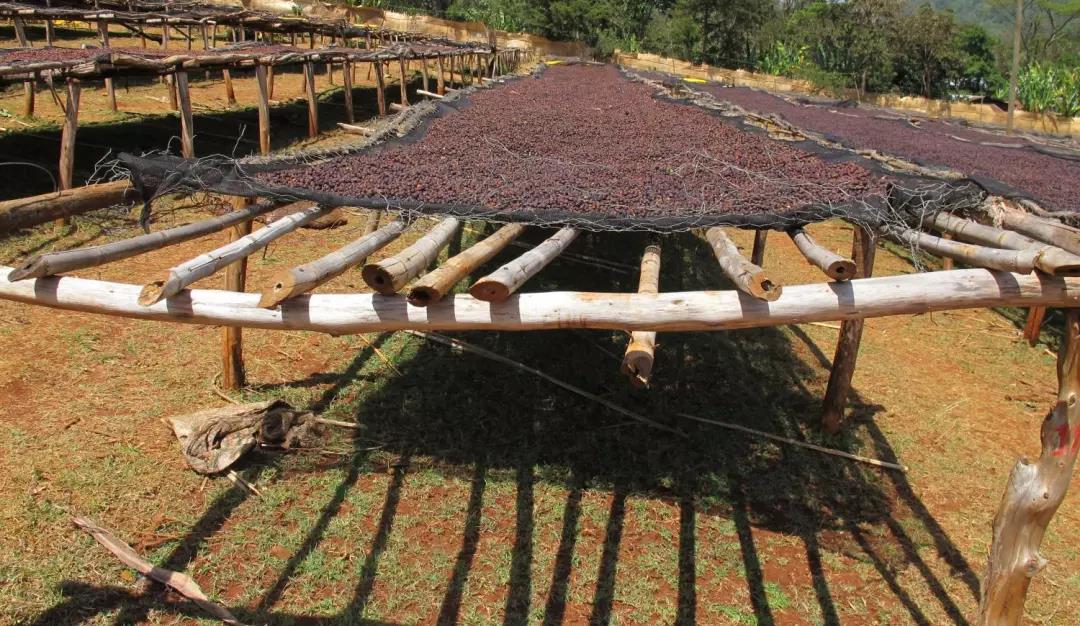
Professional coffee knowledge exchange more coffee bean information please follow the coffee workshop (Wechat official account cafe_style)
ETHIOPIA,SIDAMO,Drima Zede
Sun West Dharma
Ninety + candles
Guojia: Ethiopia Ethiopia
Production area: 90+SNNP, Sidama (Sidamo)
Sea pull: 1750-2000 meters
Treatment method: sun treatment method Natural Process
Variety: Ethiopian native species Ethiopian Heirloom
Shallow baking Light Roast
Wind: floral aromas, nectarines, tropical fruits, blackberries, blueberries, plums, cream, cinnamon
Acidity: medium to high
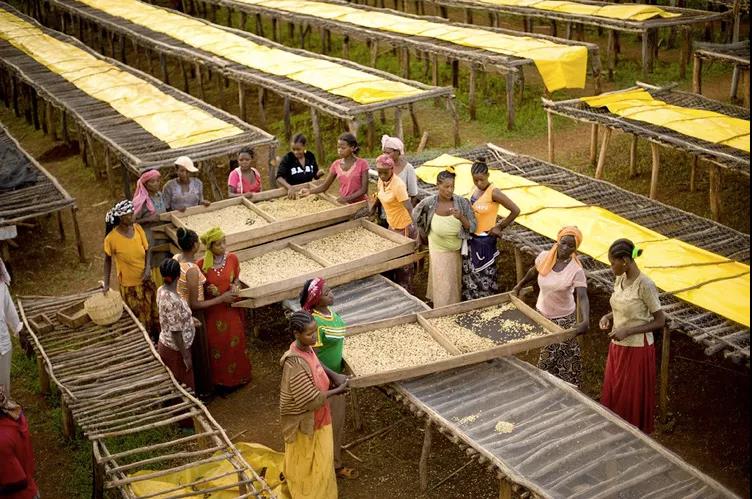
Brief introduction of candle candle producing area
Sidamo, which grows in the southernmost Ethiopian plateau between 4600 and 7200 feet above sea level (Sidamo province), is a famous boutique coffee area in southern Ethiopia, bordering Kenya, southeast of Gemma, just south of the capital, usually sweet and loved by most people, with an annual output of about 225000 bags / 60kg.
The coffee in Sidamo has a variety of flavors. Different soil types, microclimates and countless native coffee species, towering mountains, highlands, plateaus, valleys and plains, diverse topography, and the geology of the area belongs to nutrient-rich, well-drained volcanic soil. the depth of the soil is nearly two meters, and the surface soil is dark brown or brown. The biggest advantage of the area is that the soil fertility is maintained through the circulation of organic matter, using the withered leaves of the surrounding trees or the residual roots of the plants as fertilizer.
So what on earth is 90 + coffee beans?
Now many stores are after Ninety Plus (90 +) coffee, 90 + coffee beans in the coffee industry is a symbol of honor. But what exactly is Ninety Plus (90 +) coffee and how to introduce it to others? here is a detailed description of 90 + coffee.
Ninety + what on earth are 90 + coffee beans?
"90 +" does not refer to all coffee with a rating of more than 90 points, it refers to a top range of 13 flavors.
Sometimes they haunt different manors, and they have different taste characteristics. When processing, baristas will separate these coffees according to variety, climate and fresh time, and taste them one by one. They are like works of art that tend to be perfect. Baristas take great pains to give them the best taste and present them in the most perfect posture.
The pursuit of "90 +" for the ultimate flavor is very admirable, and their sustainable development model and environmental protection operation are also the learning goals of many coffee producers. Since the company was founded in 2006, the young company has made them known to coffee industry people all over the world in just a few years. The coffee series that made its debut in 2007 was immediately regarded as a precious show by coffee experts.
Ninety + Ninety Plus Coffee founder Joseph Brodsky
Since 2006, Joseph Brodsky, founder of Ninety Plus, has decided to change the deep-rooted commercial coffee growing model. Ninety Plus sees an opportunity to grow Ethiopian heirlooms that love shade and delicacy while growing tropical land, while creating a new model to inspire and improve the quality of life of its coffee growers.
The Ninety Plus team currently owns and / or operates more than 1500 hectares of coffee forest restoration projects in Panama and Ethiopia and has established an international brand to promote the success of a taste-driven model for an ecologically and socially oriented agricultural economy.
Joseph Brodsky, the founder of Ninety +, discovered early that all the world's high-quality raw coffee beans originated in Ethiopia, and its different flavors of many different varieties are no less than 10, 000 grapes into 1 million different wines.

Ninety percent of the raw beans are from the original varieties of Ethiopia, including the Manor of Panama (Gesha) is also the original variety of Ethiopian heirloom (Heirloom) transplant. The processing process is the specialty of 90 +, will separate these coffee according to variety, microclimate, fresh time one by one, taste one by one, specially design the processing method for each taste, achieve a kind of taste characteristic, just like the big brand design, study attentively, spend painstaking efforts to complete a handicraft that is close to art. Natural products go through a lot of refinement and improvement, and finally reach the most beautiful posture to present the content to everyone.
Joseph Brodsky founded Ninety Plus (90 +) in 2006, and Joseph began his journey when the Geisha species appeared in Panama in 2003 and 2004, but when he didn't find the result he expected in Panama, he had another idea that there may still be untapped potential among the more than 10, 000 coffee varieties in Ethiopia.
In order to ensure quality, 90+ adopts a cooperative model with local manors, from planting, sampling and harvesting to subsequent processing and cup testing. 90 + exclusive Profile Processing ensures that each coffee bean has a unique and stable flavor trend and quality, while 90 + coffee is unique in the market with the marketing method like high-end red wine.
90 + 90 + Profile Processing processing mode
However, as coffee gradually moved towards the high-price boutique market, 90 + took the lead in establishing its own raw bean production system-Profile Processing.
At the beginning, the 90 + company only bought the best coffee cherries from Ethiopian coffee farmers, and started with the best ready-made beans, so there were 90 + representative beans: Aricha and Beloya, which became famous in the first world war, but the experimental results were amazing, and the whole boutique coffee circle was shocked by the rich fruit flavor and high texture.
Then it is to select potential coffee farmers, according to the current coffee beans to set the ideal flavor back to bean farmers and processing plants, carry out process reengineering, and gradually revise the samples to the original flavor of 90 + by scientific management. but of course, it is necessary to carefully select the most suitable ones before the products can be produced.
Profile Processing simply means to extend the scope of management upstream, from the varieties, producing areas, climate, planting methods, harvesting and treatment methods of coffee farmers. If you control all of them, you can produce super-high-quality coffee beans according to your own preferences. The reason why the Profile Processing system is so powerful is that it has the technology to control flavor performance in hand, so it can plan and set the highest standards and surpass the general raw bean merchants' chance to select and buy raw beans. The quality exceeding the standard is not luck, but the average level, which is also the core value that 90+ companies have always adhered to.
Quality Control of naturally processed Coffee
Select:
At Ninety + Farm, pickers only choose red cherries carefully. This is the color of mature coffee. As coffee matures, sugars will develop into the best taste.
It is important for workers to understand the physical changes experienced by cherries. He told me that if they squeezed the cherry and calculated how many drops could escape, they could see how much slime there was. One study found that it could explain 20% of the change in cupping scores, and higher levels of mucus meant better coffee tasting. More than three drops is a good sign.
After picking, Carlos and his team measured the weight and density of cherries in an one-liter container. The results were segmented by variety for comparison, and the yield record was kept in the record.
Coffee cherries are manually sorted before and after being placed in the promoted bed. Staff must remove any immature cherries and look for any holes with coffee pulp borer (broca).
The elevated bed allows cherries to be kept on a clean surface, circulates with the wind and helps them dry evenly. The key is to keep the cherries thin and move them regularly to ensure that they are evenly dry.
Drying period:
In the first three days, cherries were exposed to sunshine and cold nights. After the third day, cover them between 12:00 and 2 o'clock, which is the hottest day. It is important to make room on the bed when the coffee is blocked.
After 20-25 days, the coffee reached the ideal water content-10.5% natural coffee, rather than the more common 11-12%. High levels of sugar that still react inside cherries mean that there is a greater risk of overfermentation, he explained.
Check his coffee with a moisture meter. He also recommends measuring humidity at the coldest time of the day to achieve higher accuracy.
Cherry storage:
When stored, coffee cherries are placed in GrainPro bags to protect them from insects. Then store them in the warehouse to avoid direct exposure. The raised wooden courtyard kept the bag off the floor. The moisture content (60-65%) and temperature (19-25 ℃) in the warehouse should be carefully controlled.
It takes an average of three months to prepare coffee for export. During this time it will continue to stabilize, he explained: the taste of any herbal medicine will disappear, and the acidity and sweetness will continue to develop.
90 + Coffee is famous for its processing. But great coffee will not happen without a major investment. And the professional level is no exception.
Ninety + 90 + Profile Processing unique production system
The nomenclature of 90 + beans is completely different from that of general boutique beans. First of all, unlike the usual names of producing areas and manors, each bean is named according to its flavor, for example, the famous Nekisse is originally intended to be taken from Shakisso's nectar.
The name of 90 + usually starts with the concept of flavor, then the name, and then the choice of producing areas and cooperative farms. In this respect, it is very different from the general boutique beans and is a brand with boutique management style.
It is not difficult to find that usually beans have the letters N, H or W, such as Ethiopian Yiagacheffe G3 N, which is commonly seen in the market, where N stands for Natural. H = Honey (honey treatment) and W = Washed (washing). Here, 90 + also has a different view, they think that rather than using the method of treatment to distinguish beans, it should be distinguished by the trend of flavor. Generally speaking, each treatment of beans will have a more representative flavor, such as:
Insolation: unrestrained fruit aroma
Honey treatment:: the sweetness is outstanding.
Washing: the flavor is relatively clean
However, 90+ believes that sometimes there will be the same flavor trend under different treatments, for example, the flavor performance of beans treated with honey may be similar to that of washed beans, so they have introduced three basic flavor labels of N2, H2 and W2, which are distinguished by the intensity of fruit aroma and taste:
W2: (Low) low fruit tonality, emphasizing brightness, acidity and floral aroma
H2: (Moderate) moderate fruit tonality, emphasizing sweetness, fruit taste (non-aroma) and tea flavor
N2: (High) strong fruit tonality, emphasizing unrestrained flavor, sweet and sour, jam and dried fruit.
In 2011, in order to improve the stability of raw beans produced in Panama during the drying stage, Joseph developed a solar drying system inspired by a wood drying chamber with the University of Wisconsin in the United States, and named this exclusive treatment Solkiln (SK). Of course, the beans after this special treatment are very expensive, and because of the space they can hold, the output is very small.
In 2009, 90 + founded NPGE Manor in Panama, all growing the most powerful Geisha coffee.
In addition, Ninety plus Sensory Room (NP sensory Laboratory) and Solar Kiln Lab (SK treatment) are set up in NPGE Manor, as well as red treatment (Red), ruby treatment (Ruby) and other new studies which are different from the general raw bean treatment.
You can imagine that NPGE is the largest experimental farm of 90 +. It is fun to experiment with the best varieties and implement the Profile Processing system to the end.
After several years of planting results, NPGE launched five Geisha, including Lycello Lisilo, Perci Percy, Juliette Juliet, Silvia Sylvia and Lotus Lotus.
Among them, Perci has upgraded versions of Perci Red (red treatment) and Perci Ruby (ruby), which change the sweetness of Perci differently, while Silvia Sylvia and Lotus lotus are the latest new products of SK treatment.
Among them, only SK treatment (Solar Kiln) will be specially marked, and it is also because SK is a new original processing method of 90 +, and its pertinence is relatively clear, so it is specially marked.
Ninety + 90 + Ninety Plus grade
Finally, 90 + beans also have a scoring system different from the usual 100 points. Raw bean merchants can have their own scoring criteria, and their grades are based on three factors: flavor, cost and output:
In addition to its own flavor symbol, each bean also has its own grading method, which is quite different from that of other countries, which is divided into the following seven grades.
L4 、 L7 、 L12 、 L21 、 L39 、 L95 、 L195
L means Level, and the classification is based on the quantity of production, the refinement of processing, the degree of difficulty and the rigor of screening.
Level 7: harvested in a single production area. The rare varieties with meticulous taste and special flavor are selected by hand and then treated by NinetyPlus to reach the standard of more than 90 +.
Level 12: harvest in a single production area. Negative adjectives such as "must be recognized and indelible" are used on the website to indicate that this grade of beans must be a good taste that every coffee maker will never forget.
Level 21 (L21), Level 39 (L39), most of these are Gesha varieties planted in Panamanian manors. Ethiopian Nekisse Red processed by special Red also belongs to Level 39 (L39).
Level 95 (L95) and Level 195 (195) are beans in the advanced microenvironment of the Panamanian manor, which are processed by patented drying technology after a long screening process. Reach the top taste standard in the design. Most of them will be processed under the personal care of the sponsor Joseph. The annual output may only reach about ten to dozens of kilograms. It's a collection.
The products in the new season in 2017 may abolish the original L grading system (the original L7\ L12\ L39\ L139), while the division of products and product lines is divided by a more significant taste. The product line is divided into four series: NinetyPlus Ethiopia, NinetyPlus Panama, Ninety Levelup, NinetyPlus Limited
L4 section: this grading can no longer be seen at 90 +. In the past, it refers to mixed harvested batches. When the flavor of a single producing area is not rich enough or the yield is too little, it is produced by mixing several excellent producing areas, which is a bit like the previous Aricha and Beloya. However, after 90 + years, the experimental control technology for coffee production has become more and more mature, this grading method has been no longer used.
L7, L12: most of the Isabia beans are in this grade, and the flavor is already very good, no matter the aroma or texture is impeccable. This grade of 90 + can be said to be an entry-level commodity with a fairly good CP value.
For example: Tchembe and Kemgin are the original L7, Nekisse and Hachira are the original L12.
L21, L39: this is almost the world of Geisha coffee in NPGE Manor, it can be expected that for 90 +, the Geisha variety itself is a high-grade representation, so the lowest grade is also in L21. Of course, it can also be extended to think that the care of Geisha may be harder and more stringent than that of Isabia beans.
In addition, specially treated Isabia beans can also be upgraded to this section to become comparable to Geisha.
For example, Lycello is L21, Juliette is L39, and Perci is L39, all three of which are Geisha;Nekisse Red in NPGE Manor (Essobia Nekisse with red treatment) upgraded to the original L39.
L95, L195: these two levels have to go through 90 + special processing methods, such as Red (red processing), Ruby (ruby processing), SK (Solkiln processing), can be said to be 90 + exclusive processing. But to get to the most advanced L195, you still have to Geisha.
For example, Lotus (Sk treatment), Sillvia (Sk treatment), Semeon Abay (master series), Nekisse Ruby (Ethiopian bean treated with ruby) are all L95, and Perci Ruby is the only L195 (Ruby treatment + Geisha variety).
Ninety + Ninety Plus ninety + American boutique coffee series
Ninety + ginseng
The origin of the name: this is a coffee from the town of Nekempte in western Ethiopia. It is characterized by liveliness and cleanliness, with slight flavors of fruit, citrus and ginseng. The "kem" in the Kemgin name is referenced from Nekempte, and "gin" is referenced from "ginseng" (ginseng). Kemgin-flavored coffee is already produced in Waliga, Hidamo and Yega Chet Coffee producing areas.
Ginseng has been officially renamed "wild ginger flower". Compared with ginseng in 2015, in addition to the fragrance of flowers, it also retains the syrup-like thickness of previously washed beans, and this year's wild ginger flowers bring higher sweetness. as a result, the original peach flavor has gradually changed to a rare tangerine flavor, so it is recommended that friends can try this year's wild ginger flowers.
Origin: 90 + producing areas of Wellega (Warrega), Sidama (Hidamo) and Yirgacheffe (Yega) in Ethiopia.
Altitude: 1750,000m.
Treatment: washing.
Taste characteristics: White peach, lime, honeydew melon, ginseng, carob bean.
Hachira (Hatchilla N2)
The origin of the name: originated from the Aricha (Achilla) production series developed with S.A.Bagersh in 90 + 2006-2008. Name this coffee "Hachira". Hachira coffee juice has a distinctive floral flavor, usually with elderberry or BlackBerry flavors, and sometimes with basil herbs.
Origin: 90 + Ethiopia Achira (Achilla) producing area.
Altitude: 1750,000m.
Treatment: insolation.
Taste characteristics: rich floral smell, obvious sense of fruit juice, elderberry, BlackBerry, basil herb flavor, but also similar to lactose taste.
Nekisse Red Red Honey Kiss N2
The origin of the name: red handles Nekisse like its gorgeous and strong little sister. Sugar is as sweet, with my sister's classical fragrant wood and honey taste, at the same time independent and know their own charm, not afraid to play. Taste it feel deeply experienced a thicker and deeper Nekisse, it seems that someone has described the outline of Nekisse and painted it a thick eyebrow to set off the most beautiful details on the charming face.
[Origin]: 90 + Ethiopia Wellega and Sidama producing areas.
[altitude]: 1750m, 2000m.
[treatment]: 90 + patented "red treatment", which is close to but beyond the sun.
[taste characteristics]: red treatment enhances the flavors of blueberries, cherries and dark chocolate. At the same time, it maintains the balance of fruit chocolate and its multi-layered taste. It's very subtle and measured. It's a rare good coffee.
Nekisse (honey kiss N2)
The origin of the name: in 2009, the coffee was named after "Nectar from Shakisso", meaning it has the same flavor as nectar from the town of Shachiso in Hidamo province, Ethiopia. Nikisse is characterized by a creamy and smooth taste, a strong berry sauce, and some batches even have mixed flavors of citrus and a variety of tropical fruits. Although it was originally grown in the Shakisso producing area, the later Nikisse was produced in the Wellega and Sidama producing areas, but the name was retained. We feel that Nekisse's cultivation in Hidamo retains its original nectar and berry flavor, which distinguishes it from all other coffees from Ethiopia.
Origin: 90 + Ethiopia Wellega (Waliga) and Sidama (Hidamo) producing areas.
Altitude: 1750,000m.
Treatment: insolation.
Taste characteristics: the taste is clean and multi-layered. Balanced by the flavors of peaches, berries, passion fruit, cream and milk chocolate. It's a classic good coffee. From hot to cold, it constantly brings night flowers, blueberries, fragrant wood, cocoa and other surprises.
Tchembe (Clinique N2)
Origin of the name: although this year's Tchembe comes from Yega Chet, it is named after Haricho and Bolo coffee from the Amaro Mountains, which are tanned with carob and banana flavors. Tchembe coffee has a thick feel similar to clay and chocolate, as well as rich layers of citrus and berry flavors.
[Origin]: 90 + Ethiopia Yigacheffe (Yega Snow) producing area.
[altitude]: 1750m, 2000m.
[treatment]: insolation.
[taste characteristics]: the palate is thick and heavy, with earthy, dark fruit flavors and a slight citrus taste.
Juliette, Juliet H2
In the Rosa Manor of Ninety +, there is a road from the farm house to the coffee dry area. When you walk on this road, you will see a row of extraordinarily beautiful mandala. In the evening, these bell-shaped flowers give off an intoxicating aroma that only lasts for an hour or so. We jokingly call this flower fragrance "beauty of the night". There is another legend about mandala. It is said that a native Panamanian tribe will put the flower under his pillow to protect himself from harm when he sleeps at night. They believe that the mandala has a special energy to protect the family. In addition to Mandala, belladonna, celestial fairies and Mandrake also belong to the "witchgrass" family, and because these plants are thought to have mystical powers, they are often used by wizards to make magic drinks. Mandala is an essential ingredient for wizards to prepare love potions. People who drink love potions can get loved ones, but mandas are often blended by wizards into a poison that can lead to madness or death. Once when we were doing a small steam flavor evaluation of a coffee in the sensory lab, we suddenly smelled a mixture of honeysuckle, orange, milk chocolate and flowers in the coffee, which brought us back to the evening on the road with mandala. Its soft and feminine taste immerses us for a long time in the tragic love story of the mandala flower and Shakespeare's Romeo and Juliet, so we named this coffee Juliet.
[Origin]: ninety + Rosa Manor of Panama
[variety]: Rose summer
[Level]: 39
[altitude]: 1250m-1650m
[treatment method]: honey treatment
[flavor]: on the basis of the flavor of the rose summer seed itself, it is full of floral smell, and the entrance taste will have the taste of orange peel, caramel and dried cashew fruit.
Lotus Solkiln (Lotus Lock H2)
The origin of the name: the development of Lotus Solkiln flavor is modelled on the unstained lotus, a perennial aquatic plant that is sometimes mistaken for water lilies. Although the rose summer processed by the 90 + Solkiln method dries the fresh fruit directly, which is similar to the traditional sun drying method, the coffee beans do not look much different from the washing method. The Solkiln method eliminates the effects of the humid environment common in Panama on coffee by artificially creating a microenvironment in which temperature and humidity can be finely controlled. Similarly, the lotus itself can adapt to the environment of human or other warm-blooded animals by adjusting the temperature of its petals. Lotus SK breaks the usual experience of imitating Ethiopian washing or solarization, as well as the impression of the basic flavor of Rosa Rosa. In the process of naming "Lotus SK", we were also influenced by a song called "Lotus Flower" from the British band Radio Commander in Oxford. This song mainly expresses people's pursuit of inner relief, freedom, low-key survival and love of music and sensory enjoyment of life, just like this coffee, people who want to drink it can also experience such a state of mind, the MV of the song presents a pure and varied way of expression of music, if you have the opportunity to see this MV.
[Origin]: ninety + Rosa Manor of Panama
[variety]: Rose summer
[Level]: 95
[altitude]: 1250m-1650m
[treatment]: ninety + patented Solkiln secret treatment-the house uses special equipment to control temperature and humidity to prolong the drying time, enhance the taste while keeping it as clean as washing.
[flavor]: mixed aromas of figs and honey, with rich layers of melon, kiwifruit and slightly tropical fruits on the palate.
Perci (Prospect N2)
The origin of the name: the name "Perci" is derived from "perspective". The meaning of "perspective" itself is viewpoint and perspective. The name "Perci" means that in the process of sensory experiments on this coffee, we suddenly feel a unique and amazing stimulation during the overall sensory evaluation as usual, and this feeling makes us have a different view of coffee. Citing the meaning of "perspective" and naming it "Perci" reminds us that it is a coffee that impresses us. When we first tested this coffee blindly, we were pretty sure it was Ethiopian tanning coffee (in a sense). And the first thing we thought was that this was definitely not rose coffee. The basic flavor of Rosa has citrus, orange and jasmine flavors. But for "Perci", the basic flavor of Rose Xia is only a small part of its flavor. In addition, it also has mango, pineapple, carob, banana, plum, red grape, honey, peach, red coral and so on.
[Origin]: ninety + Rosa Manor of Panama
[production season]: 2013 Murray 2014
[variety]: Rose summer
[Level]: 39
[altitude]: 1250m-1650m
[treatment]: insolation
[flavor]: intense aromas of cherries, carob beans, vanilla, tropical fruits and mixed fruit juices.
Perci Red scarlet prospects N2
Origin of the name: the effect of red treatment on Perci is the same as watching a beautiful sunset in a red glass window. Perci's tropical fruits are more thorough and sweeter. All the flavors are coated with honey brandy. Pineapple, mango and peach make a fresh jam. It still has the sweet and sour taste of fresh fruit and the freshness of fruit juice, but it becomes thicker and sweeter. Wait, a lot of smell.
[Origin]: ninety + Rosa Manor of Panama
[variety]: Rose summer
[Level]: 95
[altitude]: 1250m-1650m
[treatment method]: 90 + patent "red treatment". It is close to but beyond the sun
[flavor]: red treatment highlights the taste of vanilla, tropical fruit and mixed fruit juice. The flavors of mango and pineapple have a hint of sweet wine. The taste of banana, red grape, honey and peach remains the same.
Perci Ruby? looking forward to Ruby N2
The origin of the name: Perci red treatment has been very amazing. Ruby treatment has a more chic effect on Perci. Perci's tropical fruits are more thorough and extremely sweet. All the flavors are coated with honey brandy. Pineapple, mango and peach make a fresh jam. It still has the sweet and sour taste of fresh fruit and the freshness of fruit juice, but it becomes thicker and sweeter.
[Origin]: ninety + Rosa Manor of Panama
[production season]: 2013 Murray 2014
[variety]: Rose summer
[Level]: 195
[altitude]: 1250m-1650m
[treatment method]: 90 + patented "ruby treatment"
[flavor]: intense tropical fruit aromas of brandy and honey after ruby treatment. The flavors of tropical fruits such as mango and pineapple have become wild and wild. Bananas, red grapes, honey and peaches have a hint of wine.
Sillvia Solkiln (Celia Lock N2)
The origin of the name: Sillvia Coffee is the result of the first Solkiln treatment of coffee from plot 11 in Rosa Manor in 2012. All the coffee in this plot was processed at the same time, but in the end only 25 kilograms of coffee with special flavor was successfully obtained. In 2013, we learned that the fresh fruit harvested at the end of the season absorbed more fruit flavor during the Solkiln treatment. This is because we have extended the processing time, resulting in a stronger fruit flavor of the coffee. " The "sill" part of the name "Sillvia" is quoted from the location of our farm, Silla Del Pando (Siriadel Pando volcano complex in the volcanic area of Panama), and "via" means channel or method.
[Origin]: ninety + Rosa Manor of Panama
[variety]: Rose summer
[Level]: 95
[altitude]: 1250m-1650m
[treatment]: ninety + patented Solkiln solarization-the house uses special equipment to control temperature and humidity to prolong the drying time to enhance the taste while keeping it as clean as washing.
[flavor]: the palate has obvious fruit juice taste, strong tropical fruit flavor and pineapple shortcake taste with a long aftertaste.
Lycello (litchi and cello W2:
The origin of the name: Chien Ka-Cheng, the champion of the Taiwan Division of the 2013 World barista Competition, visited the Rose Summer Manor at 90 + this year. After tasting the fruits of Rose Summer Coffee, he even reminded him of the lychees planted in his backyard! So 90 + takes the first two letters LY in the English word Lychee of litchi as the first part of this coffee name. We listened to the talented cellist Yo Yo Ma once and were impressed by his superb skill, so we took the cell in the cello word cello as the second part of the coffee name, and we went to the o in the Yo Yo Ma name as the third part of the coffee name, which is the origin of the name Lycello!
[Origin]: ninety + Rosa Manor of Panama
[variety]: Heirloom
[Level]: 21
[altitude]: 1250m-1650m
[treatment method]: washing
[flavor]: it shows rich aromas of green tea / musk and basil herbs on the basis of the flavor of the rose seed itself, with soft lemon and sweet and sour taste similar to litchi on the palate. it also has a nutty taste similar to cashew nuts.
Ninety + Danqi Dream
The origin of the name: Danch Meng is actually the sub-brand Level up of NINETY PLUS, the Ethiopian raw bean jointly promoted by the company and raw bean trader Bodhi Leaf, which was listed in 2013. Danch Meng is translated as "Perfect approach" locally. It is a product planted by Yegashifi Jinlena Abayaduo small farmers and launched against the background of NINETY PLUS's professional flavor process, with 90 + sun treatment technology. Let Danqiman have a very unique Yega Sheffield flavor.
Origin: 90 + Ethiopia SNNP, Kambata producing area
Altitude: 1700m-2000m
Treatment method: insolation
Flavors: cocoa, black raspberries, plums, juicy, floral aromas, blueberries, dark chocolate
DerarEla dreamer
Flavor: more aromatic, rich tropical fruit and lime aromas, unique chamomile aromas
Faya Deraro Derek Ella
Flavor: blueberries, strawberry biscuits, cherries, white wine, raspberries
Nitsu Ruz is obsessed with Qingfu
Flavor: flower fragrance, lemon peel, litchi, western plum, kumquat, black tea
Ninety + candles
The origin of the name: Drima Zede means "Best Approach" in the local dialect. According to the information provided by the original factory, this Yega Xuefei is a tailor-made product line developed based on 90 + years of experience. With the support of 90 + technology, Drima Zede only selects the most mature coffee cherries by hand, and the sun drying process takes pains to keep stirring to ensure uniformity. The end result is a very transparent and pure taste, hot and cold varies greatly, and the aromas of fruit, flowers and oak are very attractive.
Origin: 90 + Ethiopia SNNP, Sidama (Hidamo) producing area
Altitude: 1750m-2000m
Treatment method: insolation
Flavor: nectarine, tropical fruit, cream, cinnamon
Sidamo Coffee beans are grayish, thick in some places and small in others, with soft and strong acidity, mellow and sweet and spicy. It is one of the courtyard coffees in the highlands of southern Ethiopia. Unlike ordinary African coffee, Sidamo has clear acidity, smooth taste and delicate floral smell.
Analysis of candle baking
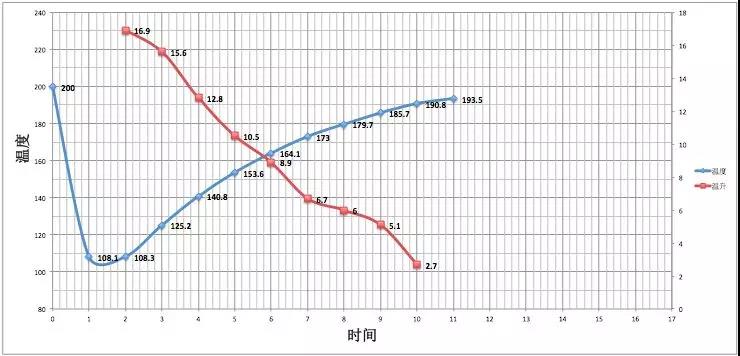
Beans with such a gorgeous flavor are certainly not suitable for deep baking, so the shallow slow roasting method of this coffee can best reflect its round and sweet, rich flower and fruit aromas.
Roaster Yangjia 600g semi-direct fire
Using fast frying mode, the furnace temperature is 200 degrees Celsius into the pan, the throttle is set at 3 degrees Celsius for 30 seconds, the firepower is adjusted to 160 degrees, the throttle is unchanged, and the firepower is adjusted once at 150 degrees Celsius. At this time, the bean table turns yellow, the smell of grass disappears completely, dehydration is completed, the firepower is adjusted to 120 degrees, and the throttle is adjusted to 4.
In the 8th minute, ugly wrinkles and black markings appear on the bean table, and the smell of toast obviously changes to the smell of coffee, which can be defined as a prelude to an explosion. at this time, listen clearly to the sound of an explosion point, to 849 "start an explosion, adjust the firepower to 70 degrees, the throttle is fully open 5 (the firepower should be very careful, not so small as to be free of bursting sound), 1: 48" after an explosion, 195 degrees into the pot.
After optimization, the sweetness of the candle has been further improved, with a hint of citrus and vanilla, and the flavor of tropical fruits such as nectarine and mango is more obvious.
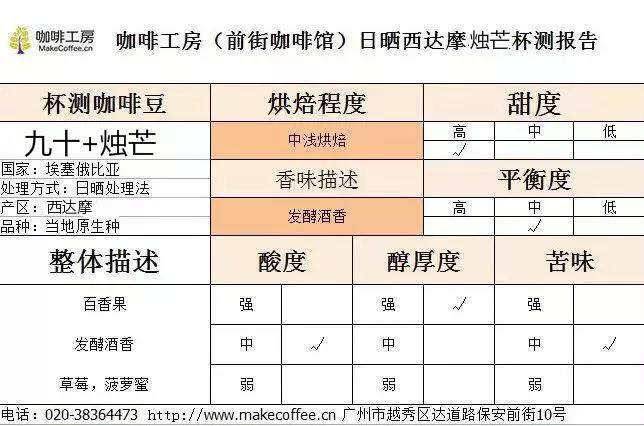
Cup test result
Important Notice :
前街咖啡 FrontStreet Coffee has moved to new addredd:
FrontStreet Coffee Address: 315,Donghua East Road,GuangZhou
Tel:020 38364473
- Prev
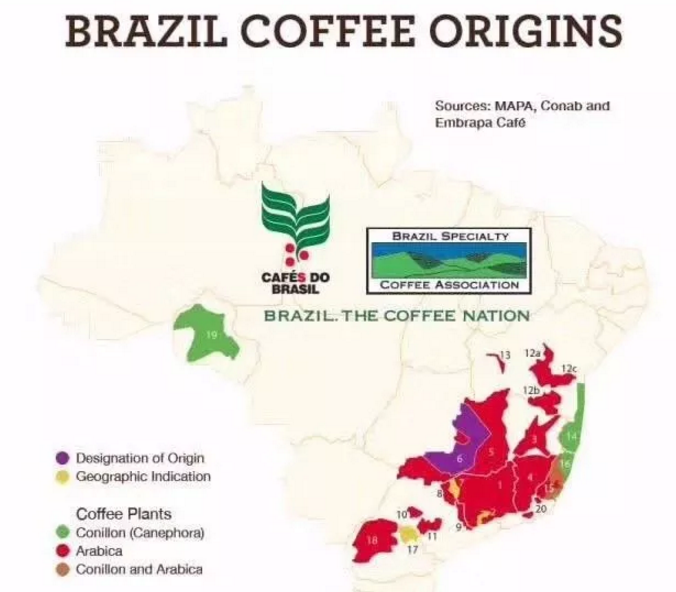
Brazilian Coffee Coffee from Hillado, Brazil, Mojiana, Brazil, Santos, Brazil
Communication of professional baristas Please follow the coffee workshop (Wechat official account cafe_style) Brazil Coffee mentions the origin of coffee, the first thing that comes to mind is Brazil in South America, because it is the largest coffee producer in the world. There is a wide variety of Brazilian coffee, the vast majority of which are unwashed and sun-dried, classified according to the name of the state of origin and the port of transport. Brazil has 2.
- Next
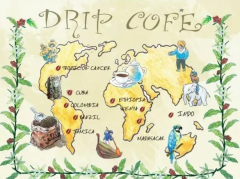
An article interprets the Colombian and Brazilian flavor of Latin American coffee beans
Exchange of professional baristas Please pay attention to Coffee Workshop (Wechat official account cafe_style) Coffee is a rich and interesting world. Coffee from different continents has some common characteristics. Coffee is the product of 15 degrees latitude from the equator to the north, so it is produced in South America, Asia and Africa. However, the coffee produced from the equator to 15 degrees north latitude is too strong and bitter, so there is only some to drink.
Related
- Detailed explanation of Jadeite planting Land in Panamanian Jadeite Manor introduction to the grading system of Jadeite competitive bidding, Red bid, Green bid and Rose Summer
- Story of Coffee planting in Brenka region of Costa Rica Stonehenge Manor anaerobic heavy honey treatment of flavor mouth
- What's on the barrel of Blue Mountain Coffee beans?
- Can American coffee also pull flowers? How to use hot American style to pull out a good-looking pattern?
- Can you make a cold extract with coffee beans? What is the right proportion for cold-extracted coffee formula?
- Indonesian PWN Gold Mandrine Coffee Origin Features Flavor How to Chong? Mandolin coffee is American.
- A brief introduction to the flavor characteristics of Brazilian yellow bourbon coffee beans
- What is the effect of different water quality on the flavor of cold-extracted coffee? What kind of water is best for brewing coffee?
- Why do you think of Rose Summer whenever you mention Panamanian coffee?
- Introduction to the characteristics of authentic blue mountain coffee bean producing areas? What is the CIB Coffee Authority in Jamaica?

